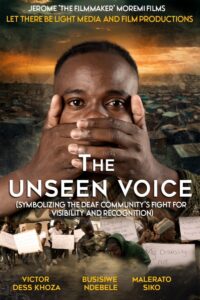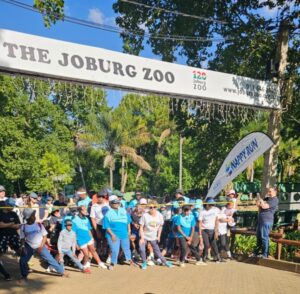
Khethiwe Nkuna on suicide

On 10 September, the world observed World Suicide Prevention Day, a moment of reflection and a call to urgent action. Suicide had remained one of the most pressing public health challenges of our time. The World Health Organisation reported that more than 700,000 people died by suicide every year, which meant one life was lost every 40 seconds. Suicide ranked among the top 20 leading causes of death globally, and it was the fourth leading cause of death among young people aged 15–29. Behind these numbers were names, faces, dreams, and families whose lives were changed forever.
In South Africa, the picture had been equally sobering. Studies suggested that between 17 and 20 people died by suicide every day, while thousands more attempted it. Suicide rates in the country were estimated at around 23 per 100,000 people, significantly higher than the global average of 9 per 100,000. These figures underscored the urgent need to address mental health openly and proactively.
The tragedy of suicide was often compounded by silence and stigma. For many, mental health had remained a subject whispered about behind closed doors, treated as a weakness rather than an essential part of overall well-being. Yet silence had proven deadly. The day served as a reminder that addressing suicide required breaking stigma, opening conversations, and building societies where seeking help was seen asa strength.
Breaking the Silence
The reality was that suicide was not about weakness. It was about unbearable pain, often invisible, compounded by feelings of isolation. Stigma had added another layer of suffering. It convinced people to hide their struggles, to fear judgement, and to delay reaching out for support. Silence had protected the stigma, not the person in crisis. When people spoke openly about suicide and mental health, they took a powerful step toward dismantling the myths. They signalled to those who were struggling that they were not alone, that help existed, and that vulnerability could be met with empathy rather than shame. These conversations, though difficult, often saved lives.
The Role of Workplaces
Given how much time most people had spent at work, workplaces were central to suicide prevention. A workplace could either be a supportive environment that promotes well-being or a source of overwhelming stress. High pressure, poor management practices, workplace bullying, or cultures of silence had all contributed to mental distress.
Forward-thinking organisations had understood that mental health was not a peripheral issue. It was a foundation for productivity, innovation, and long-term sustainability. Companies that had invested in mental health not only protected their people but also built stronger, more resilient teams. Practical steps workplaces had taken included integrating mental health awareness into leadership and team training, encouraging open dialogue and equipping managers to recognise and respond to signs of distress, developing policies that prioritised psychological safety just as they did physical safety, and offering access to wellbeing programmes, employee assistance, or professional counselling. Workplaces that had championed mental health sent a clear message: people mattered for who they were, not only for the work they produced.
From Awareness to Action
Awareness had been essential, but action was where change truly happened. Suicide prevention requires commitment across all levels of society. As individuals, people checked in with those around them. A simple “How are you, really?” had the potential to open a door. Listening with patience and empathy often became the turning point someone needed. As families and communities, people fostered environments where struggles could be shared without judgment and where young people, especially, felt supported. As leaders, many had set the tone by speaking openly about mental health and showing that it was safe to seek help. As organisations and governments, investments were made in proactive programmes, expanded access to mental health services, and policy decisions that prioritised wellbeing as a societal goal. It had taken courage for someone to ask for help, but it had taken collective responsibility to ensure that when they did, the help was there, accessible, and without stigma.
Accessing Support
Support had been available, and knowing where to turn often saved lives. In South Africa, the South African Depression and Anxiety Group (SADAG) has provided critical lifelines:Suicide Helpline: 0800 567 567 | 24hr Helpline: 0800 456 789 | WhatsApp: 076 882 2775. No one should have felt that they had to navigate the weight of mental distress alone. Reaching out—for oneself or for someone else—often became the first step toward hope and healing.
Our Shared Responsibility
On World Suicide Prevention Day, people remembered those they had lost, but remembrance alone had not been enough. The most powerful way to honour them had been to act, to create workplaces, schools, families, and communities where fewer lives were ended by silence and despair. That meant speaking openly, listening with compassion, and dismantling stigma. It meant building cultures where vulnerability was understood as part of being human, not a failing. It meant ensuring that it was acceptable not to be okay and that support was never out of reach. Every action, however small, contributed to a culture where hope was stronger than despair. Checking in on a colleague, creating a safe workplace conversation, calling a helpline, or challenging a harmful stereotype—these had all been acts of prevention. On this World Suicide Prevention Day, people chose courage, compassion, and collective responsibility. Together, they built a vision of a world where fewer lives would be lost, more voices would be heard, and everyone would know they were not alone.






